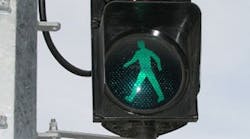Gary Ballesteros, vice president, law, Rockwell Automation; and Don Segal, attorney at law, Segal, McCambridge, Singer and Mahoney, discussed the liability potentials when man — and lawyer — meets machine.
An audience question recognized the murkiness of these issues. "I have machines in the field, built to the standards at that time, and grandfathered in as OK, but the standards have changed and so there now are a few elements in the changes that could improve things. If you go ahead and do what's right in new design elements and field changes, are you liable for everything that's out there?"
This issue, said the lawyers, can demonstrate that sometimes the law actually displays some common sense. "It often fits the criteria for making what's known as 'subsequent remedial measures' that the courts recognize as a well-intended improvement, and can't be used to prove what I did before was wrong," Ballesteros said. "If the law of common sense says it's the right thing to do today, and even if you implement it only partially because it's not economically feasible to do it all, how can that be a bad thing?"
[pullquote]Ballesteros reminded the audience, many of whom identified themselves as engineers, that the law understands who knows about these issues the best. "The law follows you engineers on this," he said. "I can't think of any state that hasn't incorporated the National Electrical Code as law. Engineering standards are critical, even if not expressly adopted as the law, as elements of proof that your product is not defective if you followed the standards."
The presenters offered advice on how to minimize the risks of product liability.
No. 1, know the rules about how you build your products and how you build them safely and comply with standards. "It's tricky, particularly here in the U.S., because there are issues about what sorts of rules apply," Ballesteros admitted. "So one common denominator that is effective is to follow the engineering standards associated with machine building and product manufacturing."
Proper warning is also a key element. "There's not a product liability case in which the issue of warnings doesn't come up," Ballesteros said. "It's an area where you want to have good expert advice."
Refining the quest for expert help, Ballesteros added, "It's the 'Goldilocks and the Three Bears' advice. Not too much, not too little; you have to get it just right."
The presenters identified some due diligence items that help with hazard analysis, although one of them is a double-edged sword. "Look at what competitors do, but don't assume that they are smarter than you. It's a useful touch point, that's all."




